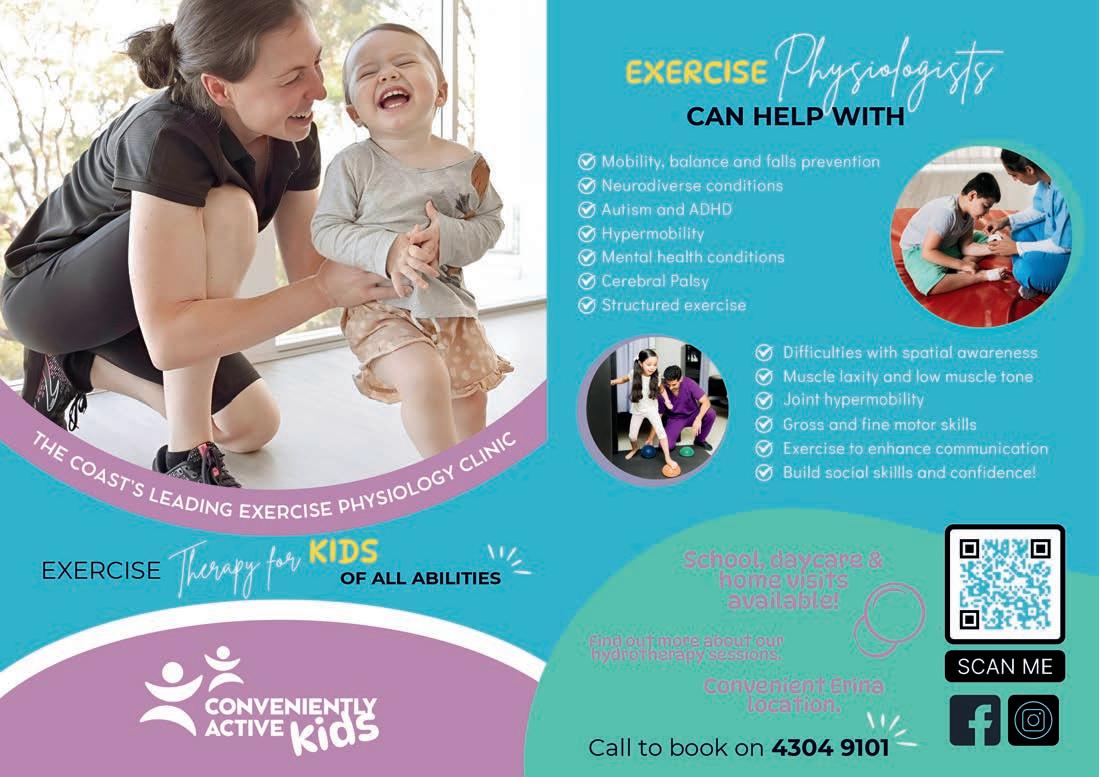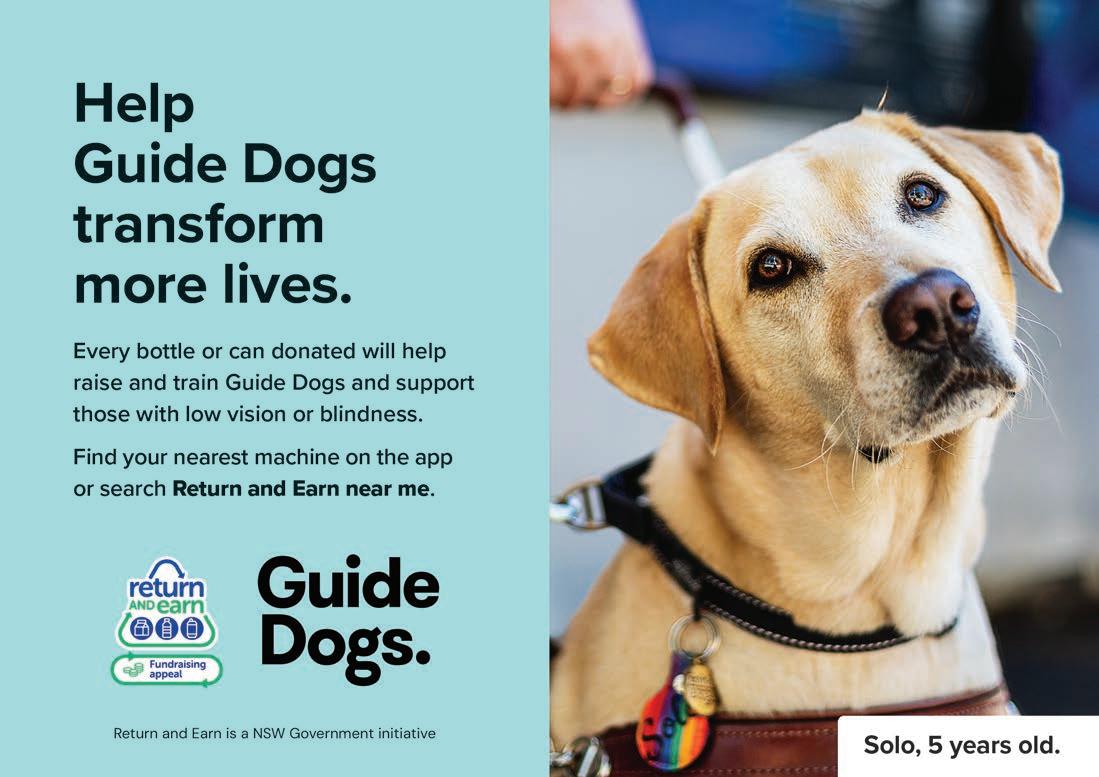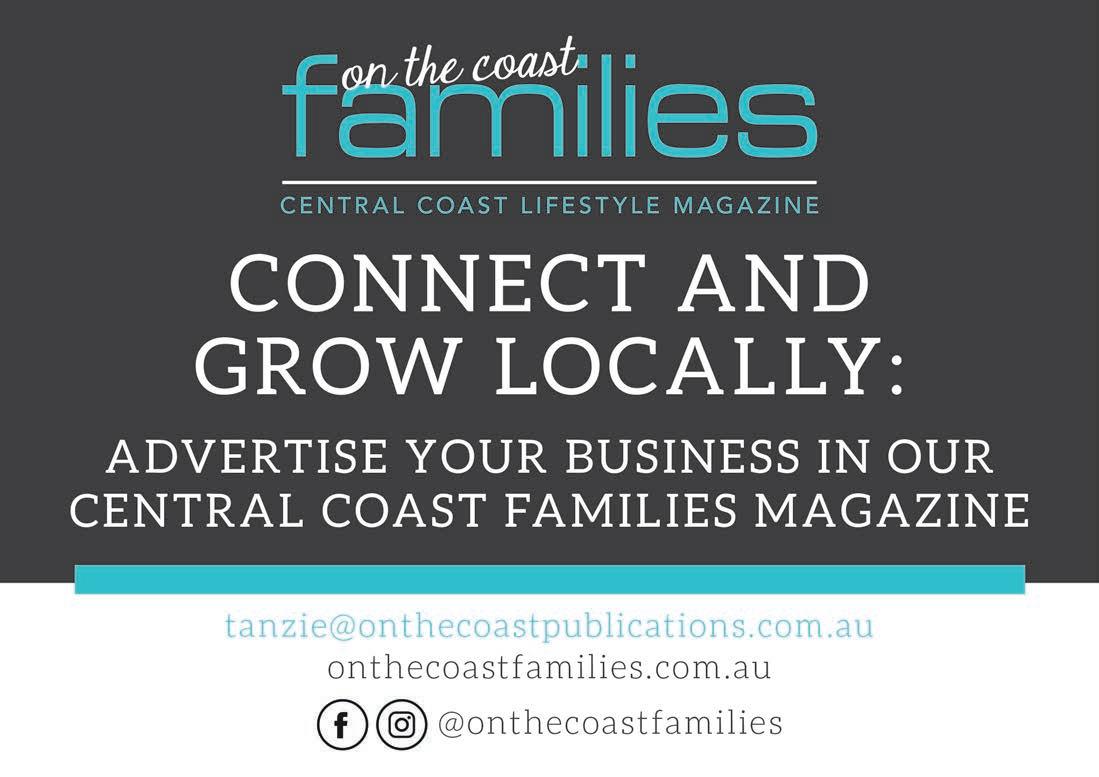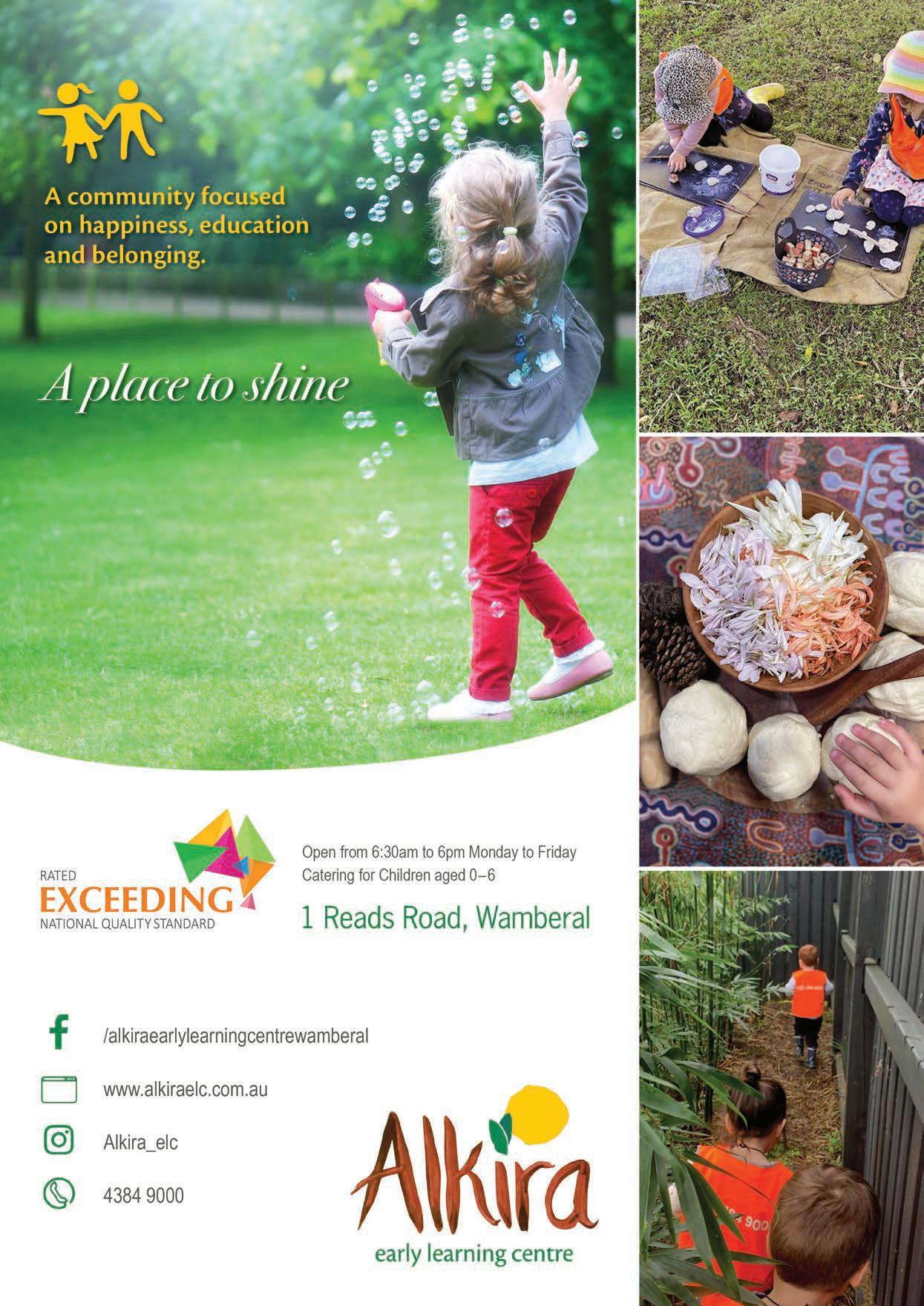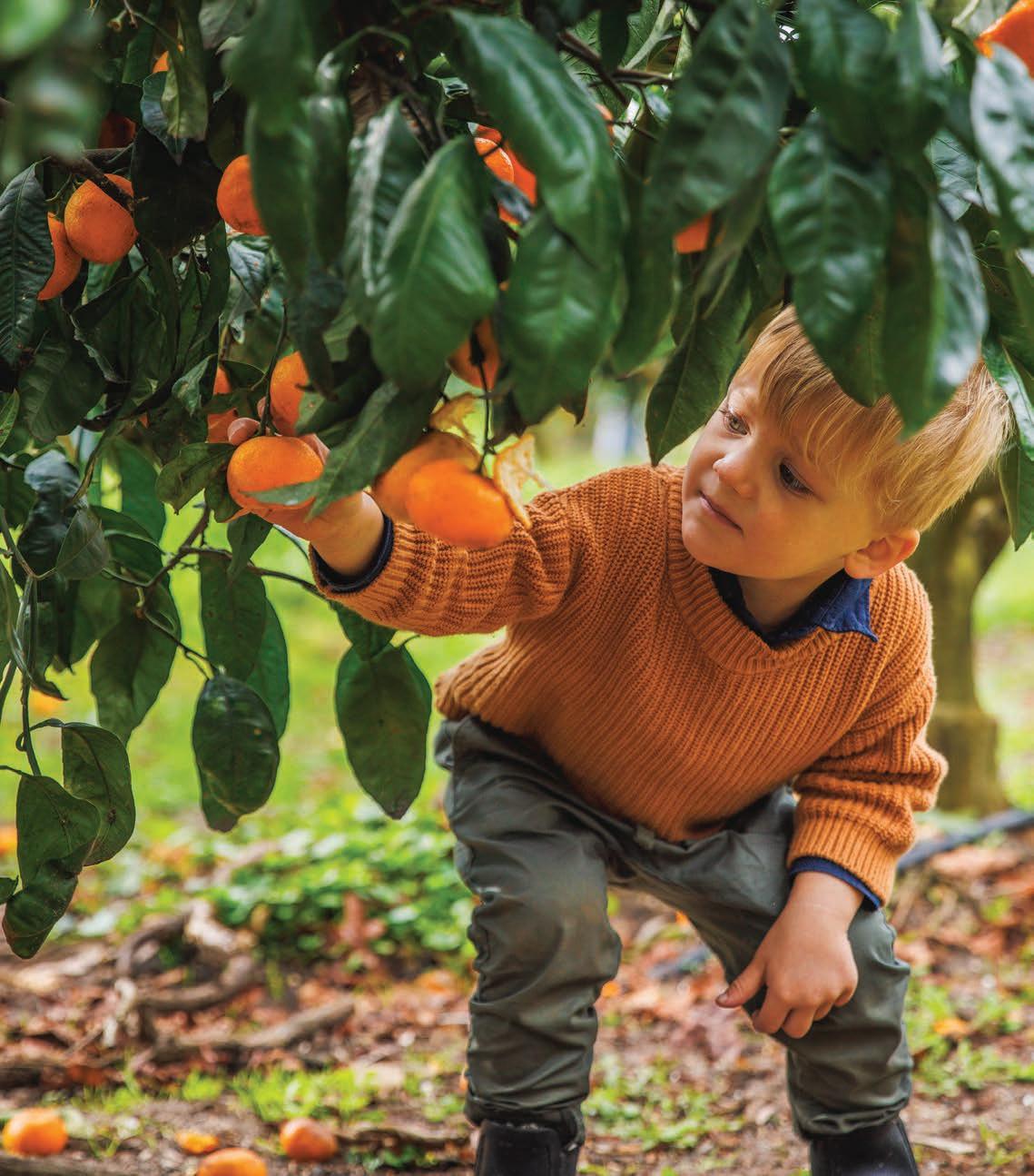
SATURDAY 7 AND SUNDAY 8 JUNE 2025



SATURDAY 7 AND SUNDAY 8 JUNE 2025

Do you ever get given a reality check when your kids say something and you realise they are growing up and you’re getting older?
For the most part, I don’t feel my age. Most days I still feel like I’m 30 but just with a bit more patience, wisdom and contentment within myself.
Until my eldest daughter, who is almost 10, uses a phrase when talking to her friends, that back in my day meant something totally different.
Enter reality check!
My dad has always said that age is just a number and recently at his 74th birthday, he invited all the family to his 100th birthday and he’ll easily make it to 100 and then beyond. I definitely think there is truth to the saying, “you are only as old as you feel”.
So with that, I’ll keep taking my vitamins, thinking young and laughing with my kids about the ‘wild times’ I had growing up in the 80s!
Love, light and laughter always Coasties =)
Art Director/Editor
Tanzie Carpenter tanzie@onthecoastpublications.com.au
Production Luke Carpenter luke@onthecoastpublications.com.au
Editor Jessica Sanford editor@onthecoastpublications.com.au
Publisher
Tanzie Carpenter / 0414 611 851 Luke Carpenter / 0405 449 339 trading as On the Coast Publications ABN 52 212 212 482 PO Box 3251, Bateau Bay NSW 2261
For advertising enquiries advertising@onthecoastpublications.com.au
For article contribution enquiries tanzie@onthecoastpublications.com.au
Cover image
Aaron Leslie from Colony Creative Imagery freepik.com
Contributors
Mia Eddy, Simon Tarrant, Sam Woods, Jordi Woods, Alita Blanchard, Alyssa Said, Alice Worthy, Alex Wilson, Selina Chapman, Louise Hurley, Jessica Sanford, Clare Marcangelo, Dr Georgia Page and Sarah Tolmie onthecoastpublications.com.au
4 Our Community Series –Deconstructing domestic and family violence myths 7 Central Coast Harvest Festival 2025 8 How to make the most out of your family’s finances 10 Dopamine dressing 12 When you feel like your drowning: Emotional first aid for overstimulated, exhausted and lonely mothers
14 How are sweet food preoccupations in kids formed?
16 B irthing myths
18 How DBT can supp ort kids, teens and adults with ADHD
20 Which therapy is best for me?
22 Why lifting weights should be on every woman’s radar 23 The Reading Corner
25 Top tips for using food to ease your child’s anxiety and emotional meltdowns
26 Protecting your family from RSV: what parents need to know 28 Matters of life & love
29 Helping kids thrive: the impact of exercise on children living with neurodiversity and physical disabilities
responsibility
@onthecoastfamilies proudly supported by
Read our previous articles at onthecoastfamilies.com.au
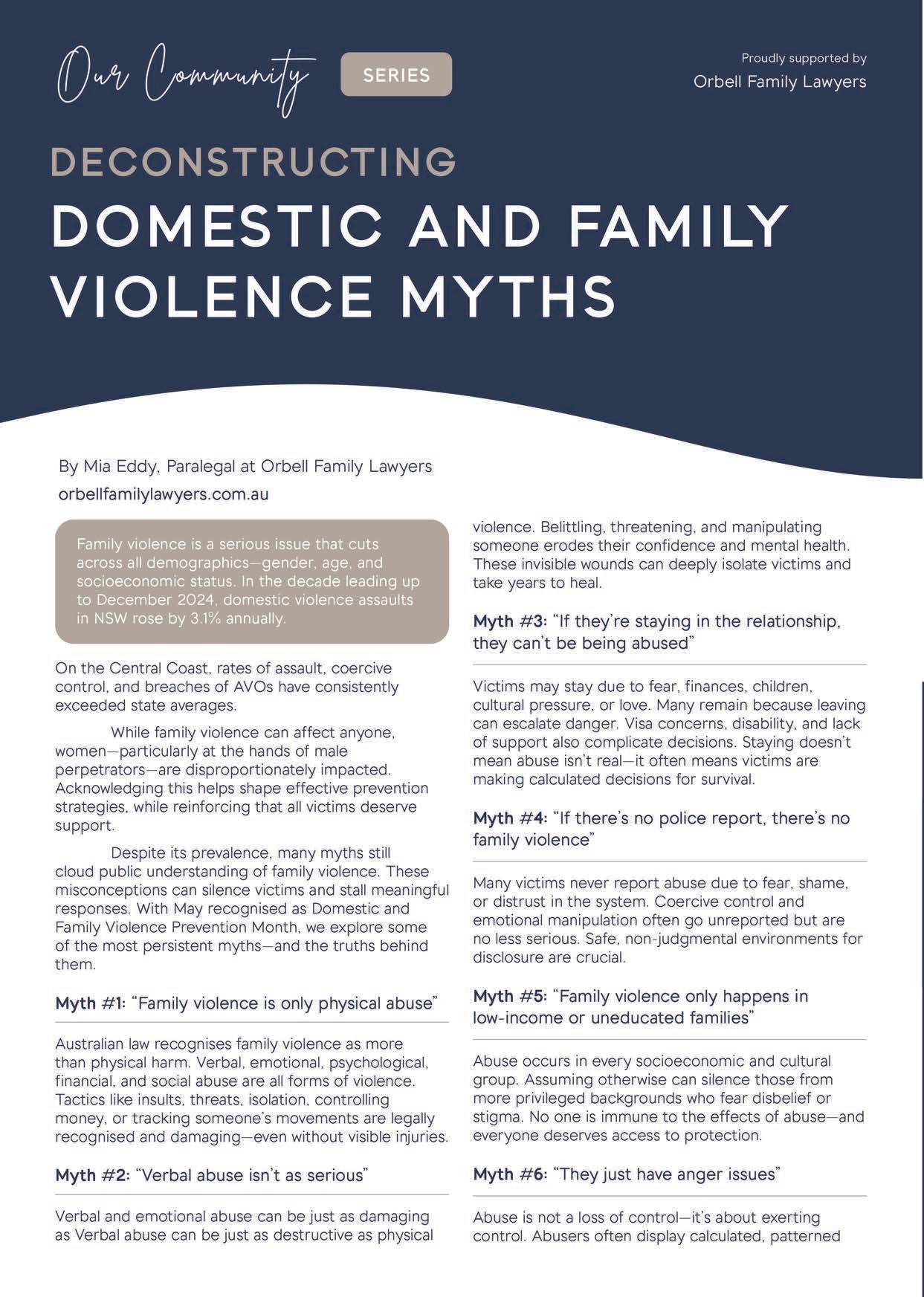



Mark your calendars for a fun–filled, family–friendly weekend on Saturday 7 and Sunday 8 June as the Central Coast hosts its annual Harvest Festival. This vibrant celebration spans ten charming farming communities, including Dooralong, Jilliby, Yarramalong, Wyong Creek, Kulnura, Mangrove Mountain, Calga, Peats Ridge, Somersby, and Spencer, offering an unforgettable experience for families and children of all ages to experience over the June long weekend.
The Harvest Festival is not just a feast for the tastebuds; it’s a fantastic opportunity to explore the beauty of the Central Coast hinterland, often overlooked in favour of its stunning beaches. With over 35 event hubs, families can embark on a unique harvest trail filled with exciting activities that highlight local produce and farm life. Imagine picking your own fresh strawberries and bright yellow sunflowers from local farms, or cuddling a fluffy chick while learning about the importance of sustainable farming practices. These hands–on experiences create cherished memories that children will carry with them for years to come.
The festival truly shines the spotlight on paddock–to–plate dining. Families can indulge in delicious meals prepared with fresh, local ingredients while enjoying the backdrop of serene valleys and picturesque farms. Kids will love the live music and entertainment, including fun performances that keep spirits high throughout the weekend.
In addition to fruit picking and farm experiences, the festival offers many exciting workshops, where families can learn new skills together. Whether it’s craft workshops, or engaging demonstrations on farming techniques, there’s something for everyone to enjoy. As you follow the trail and travel between the events, be sure to take in the scenic views and immerse
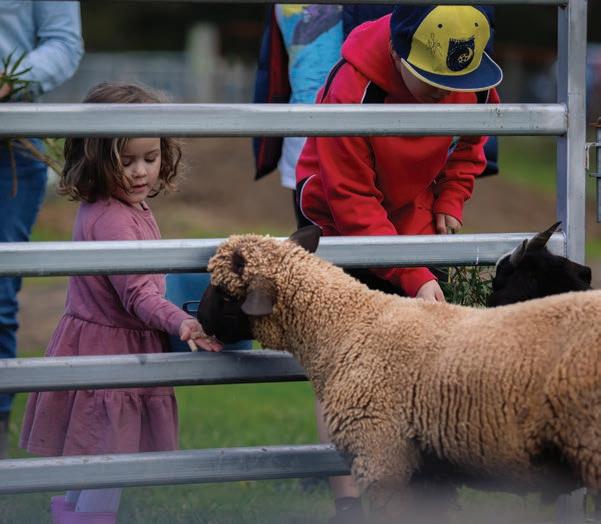
yourselves in the rich heritage of each community.
While many activities are free to attend, some of the events may require advance bookings. It’s wise to plan ahead to ensure you don’t miss out on any of the fun! Anticipate some

With over 35 event hubs, families can embark on a unique harvest trail filled with exciting activities that highlight local produce and farm life
traffic and speed adjustments during the festival weekend, so set out early to enjoy the journey. To make the most of the weekend, why not stay locally and book your accommodation early to avoid disappointment.

Don’t miss this chance to celebrate local farming and create lasting family memories at the Central Coast’s annual Harvest Festival! For more information on event details and to plan your family’s adventure, visit lovecentralcoast.com/harvestfestival. Experience the warmth, joy, and togetherness that this remarkable festival brings to families across the Central Coast.
Check out our program to plan your day. Be sure to book ahead so you don’t miss out on any of your favourite hubs. There is limited reception in some locations therefore it’s advisable to plan your trip beforehand, so this doesn’t affect your day.
lovecentralcoast.com/harvestfestival harvestfestivalcc lovecentralcoastnsw
BY SIMON TARRANT, PRIVATE CLIENT ADVISER AT MORGANS FINANCIAL LIMITED
Raising a young family can be one of life’s most financially demanding journeys. With mortgages, school fees, childcare, and the ever–increasing cost of living, it’s no surprise many families feel like they’re constantly treading water. Even with a decent income, the day–to–day pressure of bills and budgeting can make it hard to see whether you’re truly making the most of your money.
The issue isn’t always about how much money is coming in but how effectively it’s being managed.
COMMON FINANCIAL CHALLENGES
1. Rising cost of living

Groceries, petrol, rent or mortgage payments, and utilities have all gone up. For growing families, the cost of simply existing has outpaced wage growth.
2. Childcare expenses
For working parents, childcare can feel like a second mortgage. Many families struggle to justify going back to work when much of the income is eaten up by care costs.
3. Lack of time
Between work, school drop–offs, and late–night feeds, there’s little time left to plan finances properly. Often, important financial decisions get pushed aside.
4. Lifestyle creep
As income increases, spending tends to rise too often without conscious thought. A few extra streaming services or takeaway meals each week can quietly eat into long–term goals.
5. Uncertainty about the future
Many young families worry about affording education, owning a home, or being able to take holidays, but don’t know where to start building toward those goals.
5
1. Get clear on where your money goes
Tracking your spending is the first step to control. Use a budgeting app or spreadsheet to categorise your expenses over a month or two. You might be surprised by what adds up. Once you know where your money is going, you can begin to cut back or reprioritise.
2. Build a buffer
If you don’t have a cash buffer (also known as an emergency fund), start building one. Even a few thousand dollars can offer peace of mind when unexpected expenses pop up like a car
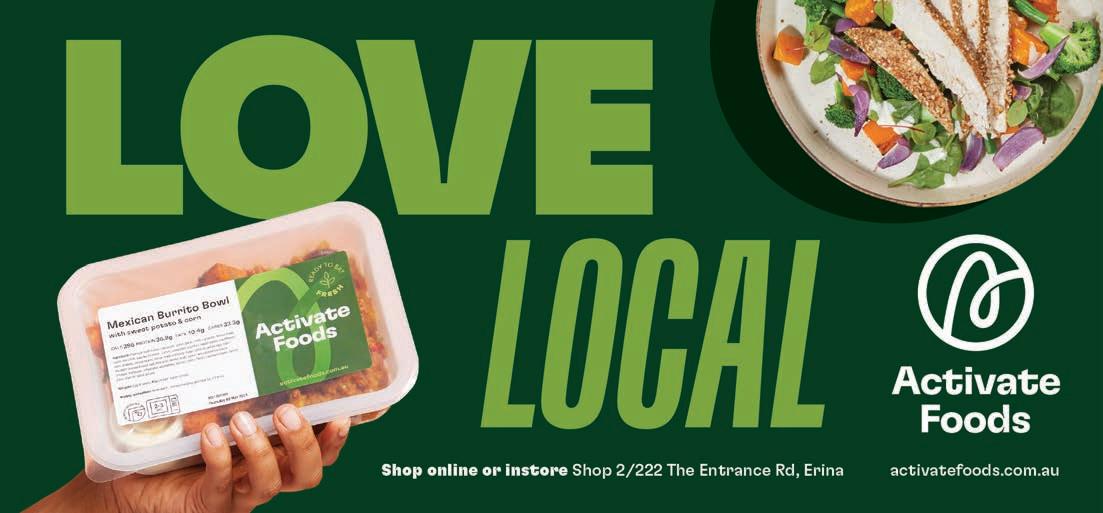
If you don’t have a cash buffer (also known as an emergency fund), start building one. Even a few thousand dollars can offer peace of mind when unexpected expenses pop up like a car repair, dental bill, or school cost
repair, dental bill, or school cost. Aim for at least three months’ worth of living expenses.
3. Don’t ignore superannuation
For young families, retirement feels a lifetime away but ignoring your super means missing out on years of
compounding growth. Make sure your super is invested appropriately, consider consolidating multiple accounts, and check whether you’re paying unnecessary fees.
4. Protect your income
Many families insure their cars but forget to protect their biggest asset –their ability to earn. Income protection, life, and total and permanent disability (TPD) insurance can make sure your family is financially secure if something unexpected happens.
5. Get advice early
You don’t need to be wealthy to benefit from financial advice. A good adviser can help you make the most of what you already have, set realistic goals, and build a plan for the future. Whether it’s saving for a home, investing for your children’s education, or getting out of debt faster, starting sooner can make a huge difference.
If you would like to discuss your family’s financial strategy, please contact Simon at simon.tarrant@morgans.com.au or via (02) 4325 0884. Morgans Financial Limited 1/6 Burns Cres, Gosford NSW 2250 morgans.com.au/gosford
Simon Tarrant (AR: 001270872) is a Private Client Adviser at Morgans Financial Limited (AFSL 235410 /ABN 49 010 669 726). Simon is passionate about creating quality financial strategies that are tailored and customised to a clients’ lifestyle, financial goals and risk profile. Disclaimer: While every care has been taken, Morgans Financial Limited makes no representations as to the accuracy or completeness of the contents. The information is of a general nature only and has been prepared without consideration of your individual objectives, financial situation or needs. Before making any decisions, you should consider the appropriateness for your personal investment objectives, financial situation or individual needs. We recommend you see a financial adviser, registered tax agent or legal adviser before making any decisions based on this information.
It’s easy to fall into the trap of living week to week, especially when kids, bills, and work all compete for attention. But with a little time and planning, you can take control of your financial future and make sure your money is working as hard as you are.



BY SAM & JORDI WOODS
The hit you didn’t know you needed
‘Dopamine dressing’ means wearing something that makes you feel good. For us as stylists, it is something we have been teaching for over two decades through our #DressUpItFeelsGood campaign and whenever we personally style a client.
However, like all fashion trends when something is given a cool name or catch phrase it can suddenly become the next new thing. This is where the dopamine dressing trend was born…to wear something that makes you feel happy and gives you a dopamine hit.
This form of dressing is easy for any occasion and requires minimal effort when you have pieces in your wardrobe that bring you joy and make you smile.
Here is the catch… you need to have items in your wardrobe that you love and that love you back. This trend really showcases how important it is that our wardrobes are filled with items that are the perfect fit, colour and style for our individual silhouettes, lifestyles and personal taste.
The secret to this style of dressing is to wear items that make you feel alive, bold, confident and happy. Whether it be your metallic boots, a lace skirt, sequin tank, your favourite blazer or a tailored pair of pants. It is all about wearing things that make you feel good.
To really amp up your outfit, always try and include a statement, or bold accessories, whether it be an earring, handbag, shoe or scarf – something that makes you smile!
If accessories are not your thing, wear something that has a bold hue (right for your colour palette of course!) to lift your mood or play with textures to add interest for a luxurious “feel good” sensation on the body.
This is the stage in your life when you need to start adding pieces that make you feel alive, bold, confident and happy every time you go to your wardrobe. You do not need to spend a lot – stick within your means and set yourself a budget, but look for items that are different to what you already have or you would normally purchase out of habit or ease.

Items that feel amazing on your skin like silk or 100 percent cotton.
Garments that feature an embellishment like studs or pearls.
A colour that is not black. For example opt for a red pant with a casual tee or a green blazer with denim.
A print, lace or sequin skirt or pant to replace your denim or wear it teamed with a denim jacket or jeans.
Raid your best friend’s, Mum’s, or Nan’s wardrobes. It is amazing what others have in their wardrobe that to them may be boring but to you may be just the piece you need!
What makes this way of dressing so easy to wear for any occasion is that it doesn’t require you to be in the latest trends. All you need are the pieces that make you feel fabulous in a way that you can let your creativity and personal style shine through, because you are wearing what you want, how you want.
We hope this article gives you the feel good hit you need to get your dopamine into overdrive next time you get dressed.
Vibrantly yours, Sam & Jordi Woods x
Understanding styling and fashion is one thing. Having a super natural flair for making everyday people look incredible is another. Once you’ve met Sam and Jordi Woods, it’s hard not to catch their infectious passion for dressing to match your own lifestyle, personality and charisma. Through their consultancy ‘Vibrant Concepts’, Sam and Jordi have transformed the lives of thousands. Let Sam and Jordi show you how to look and feel fabulous everyday at their Style Studio in Erina – learn the art of illusion dressing, colour matching, styling, translating fashion trends and savvy shopping with their unique VC Signature Styling Systems and services that are truly personal and really work! To contact Vibrant Concepts phone 0425 221 676
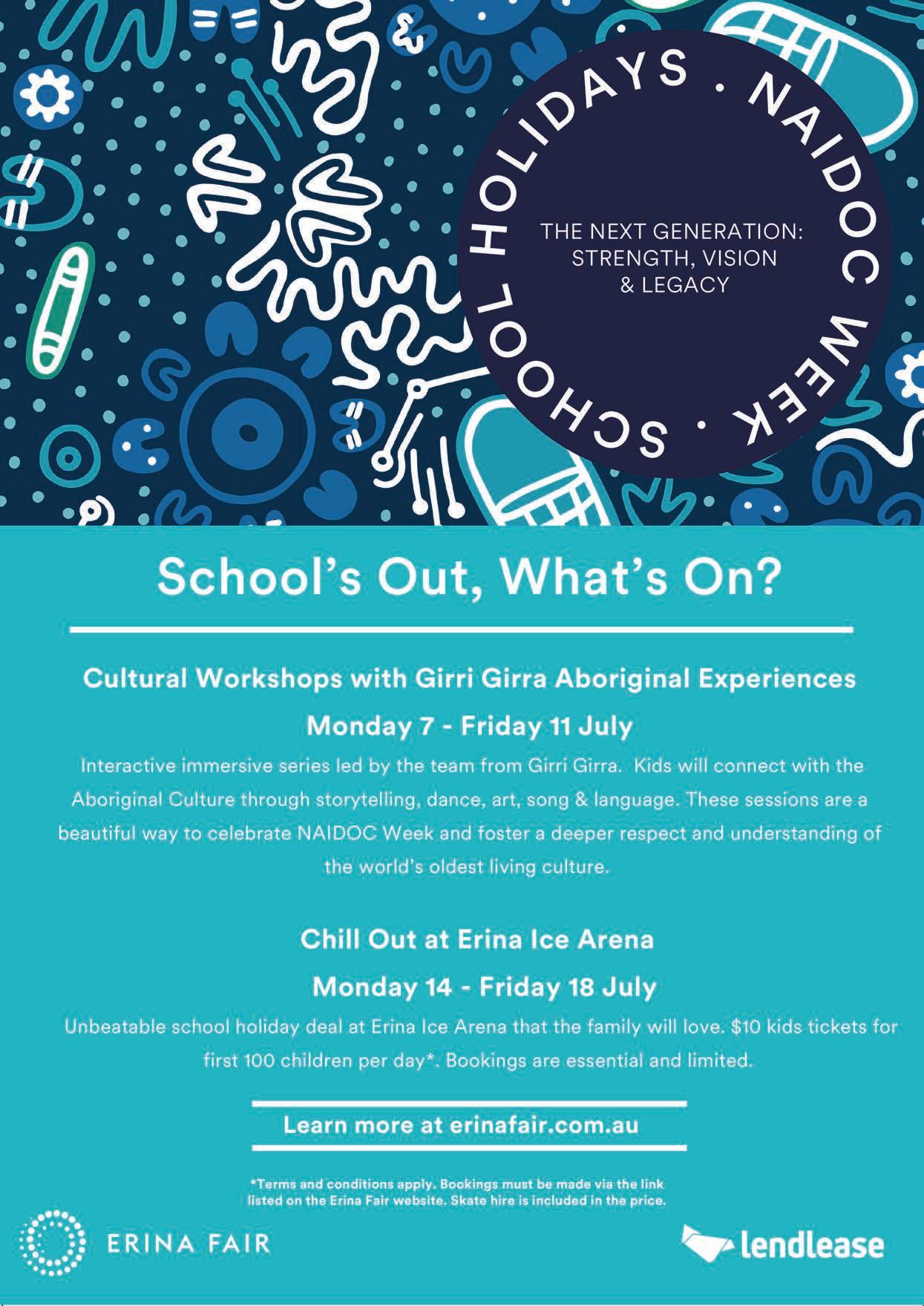
BY ALITA BLANCHARD, NERVOUS SYSTEM–INFORMED PARENT COUNSELLOR
We can all feel like we’re drowning and at our wits–end at times in parenting – sometimes it’s a tough season, but other times, it runs deeper.
Perhaps:
You have a highly sensitive nervous system – everyday sounds, smells, movements and touch overwhelm you. You feel everything emotionally and physically.
You’re overstimulated – rage feels like the only release.
You’re in the trenches of sleep deprivation – your body and brain are desperate for rest.
You’re carrying generations of unspoken pain – with no space to breathe or feel.
You’re unsupported – there’s no village around you.
No one ever modelled healthy emotional regulation – and now you’re parenting without a roadmap.
You might be neurodivergent (ADHD, autistic, sensory sensitive) — and not know it yet, or you do know, but there’s no support.
Your hormones are haywire – your nutrients depleted, your mental health quietly suffering.
Your child has complex needs and you whisper, “Why can’t they just be less… difficult?”
This is the heavy weight that many mothers carry and the absence of feeling safe, seen and soothed.
So what can you do? Start here.
1. NAME WHAT’S REAL
Say it out loud:
“I feel overstimulated.”
“I feel angry.”
“I feel so alone.”
Naming your experience turns on the thinking brain (your prefrontal

cortex), giving you a sliver of space between you and the overwhelm. That space is where you can start to access support, even if it’s only from yourself right now.
2. NAME WHAT YOU NEED
Unmet needs pile up fast in motherhood.
Here are just a few basics to aim to priortise:
Rest and sleep – (hard for many I know, focus on sleep hygiene). i.e. habits and environmental factors that promote sleep, for example, a clutter–free room or no phones before bed.
Time alone – even pockets of silence at lights off, all screens off and being still
Nutritious food – (especially protein and minerals)
Drink – a lot more water and herbal tea
Safe social connections – envision safe people around you
Creative expression and pockets of joy – music, sunshine, autumn leaves, dance in the kitchen
Movement – a walk around the block in the evening. Slow rambles with your kids.
Validation – we all need at least one person in our world who is willing to listen to our hard parts. Counsellor, therapist, mentor, safe friend.
Pick one thing – just one – to support today.
Examples:
Lay on the grass and watch clouds for 5 minutes.
You don’t need a healing retreat to begin. You just need small, consistent care
Play a song that lights something up inside you.
Text a safe friend: “Do you have 10 minutes to listen?”.
Add protein to your breakfast.
Walk around the block.
Book an appointment for you – not your child.
Buy some magnesium salts and aim for one big soak bath a week
This is emotional first aid. These are micro–moments that matter.
3. SUPPORT YOUR NERVOUS SYSTEM DAILY
You don’t need a healing retreat to begin. You just need small, consistent care.
Try:
Orienting everyday – Look around the room you are in. Notice the light, the colours, the details. Find one beautiful or neutral thing. Let your eyes rest there. Moving your neck and eye muscles sends a signal of safety to your nervous system.
Physiological sigh – Inhale through your nose. Take another short sip of air. Then exhale fully through your mouth. Repeat a few times.
Notice your breath – No need to change it. Just feel it. This anchors you in now.
These small practices tell your body, I’m safe enough to soften a little. These are key nervous system practices and daily and with repetition they slowly rewire your brain for more safety.
You are tired. You are doing your best. Let’s just take one small step
Other options to explore:
Tapping (EFT) – try YouTube for beginner routines.
Journalspeak – Write your raw truth for 10 minutes, then delete it. It’s for release, not re–reading.
Insight Timer app – Free meditations, visualisations, and breathing tools.
If you’re deeply affected by sounds, smells, textures, or chaos, your nervous system might be crying out for sensory regulation. What soothes you?
Try:
Weighted blanket or deep pressure.
Calming music or binaural beats.
Hot drinks/cold icy drinks and sensory snacks, i.e. textured, crunchy or chewy.
Essential oils like lavender or bergamot.
Tight cuddles, self hold practice or a gentle foot massage
Retreating to a quiet, soft space when possible
Create one sensory–friendly corner at home just for you – a chair, blanket, low light, scent. This is your haven.
Many of our painful emotions come from deeper stories like:
“I’m a bad mum because I lost it again.”
“I should be able to handle this.”
“Everyone else is doing better than me.”
Try this powerful practice from Byron Katie’s The Work:
Is it true?
Can I absolutely know it’s true?
How do I react when I believe that thought?
Who would I be without that thought?
Turn the thought around:
“I’m a bad mum” – “I’m a mum doing her best in impossible conditions.”
Let that become your truth.
Or try Journalspeak:
“I’m so tired of pretending that…”
“If I let myself feel my anger, I’m afraid that…”
“The part of me that feels [emotion] believes…”
Let the hidden, hurt parts of you speak. That’s how healing begins.
You don’t need to be “better.” You need to feel held – mostly by yourself. Practice building a loving inner voice –a gentle inner mother and father. One who says:
“You are tired. You are doing your best. Let’s just take one small step.”
Over time, this voice becomes your anchor in the chaos.
You are not lazy, broken, dramatic, or failing. You are a mother with feelings, needs, and a body that can’t do everything.
Start where you are. Pick one practice.
Take one breath.
Name one need.
Let that be enough today.
You are worthy of emotional first aid — every single day.
Visit theawaremama.com.au and sign up to Aware Mama news to a free eBook on Radical Self Care tips.
Alita Blanchard, The Aware Mama – Based on the NSW Central Coast, Alita is a mother of 4 boys, Holistic Counsellor, Nervous system informed Parent Coach and Emotional Release practitioner. She holds regular mothers circles, online programs and offers 1;1 support for overwhelmed parents. Instagram: @alitablanchard_ | hello@theawaremama.com.au | www.theawaremama.com.au
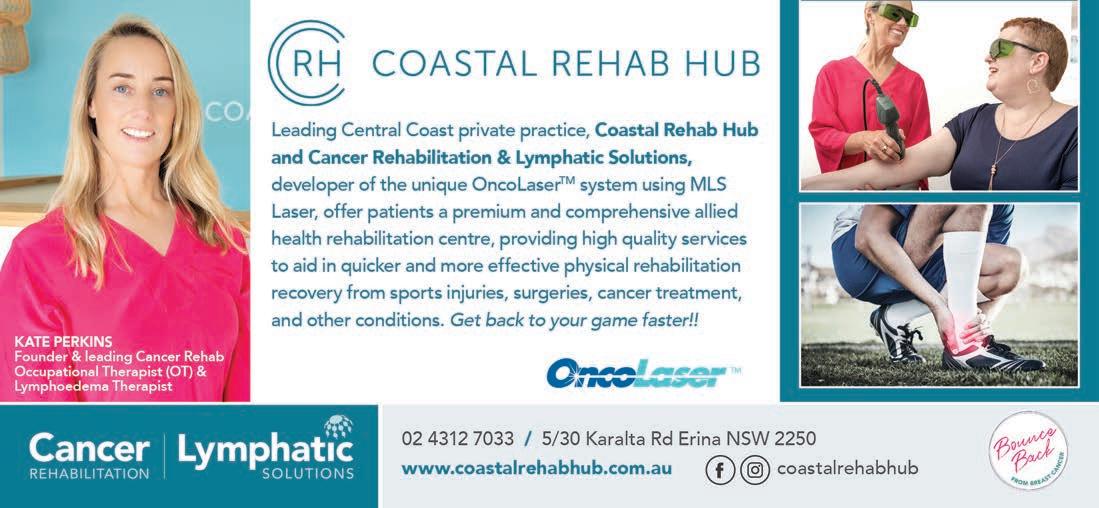
BY ALYSSA SAID, REDWOOD WELLBEING
Why do some kids seem to think about sweets all the time, while others hardly give them a second thought? This difference often comes down to something called a ‘sweet food preoccupation’.
When we say a child is preoccupied with sweet food, we mean they’re thinking about it a lot, asking for it often, or having big emotional reactions when it’s around or taken away. It’s like sweets are taking up too much space in their mind.
But it’s not black and white. We all sit somewhere along the continuum of sweet food preoccupation:
At one end is neutrality (sweets are no big deal).
In the middle is mild interest (very normal – most kids love sweet food!).
At the far end is fixation or obsession, where sweets feel like the most important thing.
Kids can move along this spectrum depending on their environment, emotions, or what’s happening around them.
So what’s a healthy goal?

We’re not aiming for kids to not like sweet food – that’s not realistic or even helpful. Sweets can bring joy, fun, celebration, and connection. The goal is to support a relationship with sweet food that’s calm, flexible, and guilt–free – not driven by anxiety, urgency, or secrecy.
It’s developmentally typical for kids to love sweets and ask for them often. They might get excited about dessert, talk about chocolate a lot, or choose sweet foods when given the option. That’s okay and expected.
However, if sweets start to dominate your child’s focus or affect their behaviour, you may notice they are; Frequently sneaking or hiding sweets.
Kids can move along this spectrum depending on their environment, emotions, or what’s happening around them
Getting very upset when treats are limited.
Seeming unable to stop eating sweets, even when full.
Constantly talking about lollies or comparing with peers.
Lying or hoarding treats.
In these cases, sweets are no longer just enjoyable – they’ve become emotionally loaded or symbolic of

Think of it this way: Genes = the wiring
Environment = the programming
comfort, reward, or rebellion.
Research suggests that genetics somewhat influence our preference for sweet foods, and that babies are born with an innate inclination toward sweetness. This preference is tied to specific taste receptors that are present from birth. These receptors, part of the body’s sensory system, allow infants to more easily detect and respond positively to sugary tastes which come from energy–rich foods.
Genetics may give a child the potential to be more drawn to sweets, but it’s the environment (how sweets are talked about, offered, and experienced) that shapes what kind of sweet food relationship they develop.
Think of it this way:
Genes = the wiring
Environment = the programming
Even with a genetic tendency, a child’s sweet food preoccupation is heavily shaped by what’s happening around them. Some key environmental triggers include:
1. Making sweets seem “forbidden” or “special”
Comments like “sugar is bad” or “you can only have dessert if you finish dinner”

make sweets seem rare or powerful –which makes kids want them even more.
2. Using sweets as a reward
Linking sweets to “earning” or “deserving” teaches kids that treats are the best food and everything else is just a chore.
3. Comforting with sweet food
Offering lollies or ice cream to soothe an upset child can teach them to use food to deal with emotions rather than learning other coping tools.
4. Sweets as a love language
When treats become a symbol of love (“I brought you donuts because I love you”), kids can connect sweet food with feeling valued or accepted.
5. Over–restricting sweets
Trying to keep all sugar out of the house can backfire. Kids often become more curious, eat in secret, or overdo it when they finally get access.
6. Parental modelling
If adults are sneaking sweets, talking about being “bad,” or showing guilt around treats, kids absorb those

messages and start to mirror them.
7. Inconsistency/food drama
Constant changes in rules, food battles, or emotional reactions around sweets create anxiety and confusion for kids, which can increase fixation.
The bottom line…
Kids are naturally wired to love sweet food. That’s okay. What matters most is how we handle it. When sweets are restricted, moralised, or over–emphasised, kids become preoccupied. But when sweets are part of everyday life, offered without drama, and surrounded by trust, most children settle into a calmer, more balanced relationship with food over time.
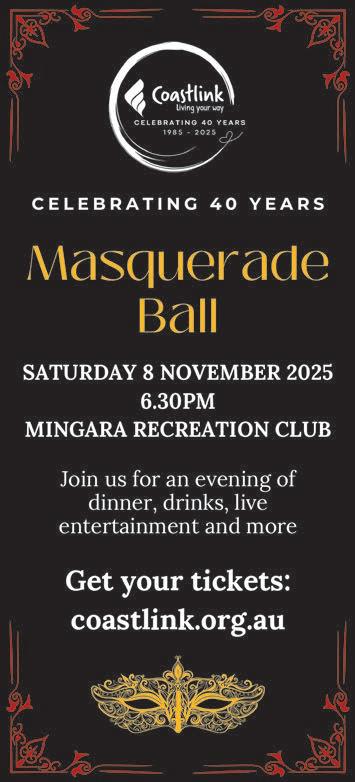
BY ALICE WORTHY, THE MODERN DOULA

When it comes to birth, everyone seems to have an opinion, especially the older generations. Maybe you’ve heard things like, “Birth is just something you have to suffer through,” or “Back in my day, we didn’t need all this support!”
But here’s the thing: birth is changing, and so are our views on it (thank goodness!).
As a modern doula on the Central Coast, I see more and more families questioning the old ways and asking, “Is there a better way to do this?” The answer is a loud and resounding yes. From how we view pain, to what support we deserve, to where and how we birth – modern birth is about choice, confidence, and connection.
So let’s dive into some of the biggest shifts in birth culture – from old–school
beliefs to new–school truths that are transforming the way we approach one of the most powerful days of our lives.
OLD SCHOOL :
Birth is something horrible that you just have to endure in order to have a family
NEW SCHOOL:
Birth can be the best day of your life and has the power to transform.
For decades, birth has been framed as something women simply survive.
Words like “traumatic,” “awful,” or “just get through it” have dominated the narrative. But modern birthing people are flipping that script. Birth isn’t something to fear, it’s something to own. With the right preparation, support, and environment, birth can be powerful, transformative, and dare I say it, even fun!!! I’ve witnessed first hand how education, mindset, and support can turn fear into confidence and pain into power.
OLD SCHOOL:
Once a C–section, always a C–section

NEW SCHOOL:
Once a C–section, now maybe a C–section, if medically required or chosen by the woman
For years, the myth persisted: if you’ve had one caesarean, that’s your only option going forward. But VBACs (Vaginal Birth After Caesarean) are not only possible – they’re often safe and encouraged. Modern maternity care recognises that every birth is unique, and your past doesn’t have to dictate your future. You have options, and as your doula, I’ll support you to explore them to find what’s best for your circumstances.
OLD SCHOOL:
We didn’t have any support and you turned out okay!
NEW SCHOOL:
Nobody should do motherhood alone and you deserve support and nurturing through this huge life transition
Motherhood has always been challenging, but doing it in isolation makes it even harder. The old narrative of “suffering in silence” is slowly but surely being replaced with one of community, care, and connection. You deserve a postpartum plan, emotional support, and rest. You deserve someone in your corner, and that’s where doula care shines –especially in the fourth trimester.
OLD SCHOOL:
Home birth is incredibly dangerous and you’re crazy for choosing it
NEW SCHOOL:
Homebirth is statistically safe and a valid and reasonable choice for many women
When attended by qualified midwives and supported appropriately, home births are not only safe—they often come with lower rates of intervention, trauma, and poor health outcomes. It’s not about rejecting medical care; it’s about choosing the right setting for you where you feel most safe. If you’re low–risk and aligned with a natural approach, home birth on the Central Coast is a calm, empowering and extremely safe option for many.
OLD SCHOOL:
You can’t plan birth, so don’t bother
NEW SCHOOL:
A birth plan is a communication tool, not a guarantee
A birth plan doesn’t mean you’re rigid. It means you’re informed. It opens conversations with your care team, sets expectations, and keeps your preferences front and centre, even when things go off script. Planning for birth doesn’t mean controlling it – it means walking in with clarity and confidence. You can read more about how to create an epic birth plan with my eBook, The Modern Birth Plan.
OLD SCHOOL:
Medical interventions are increasing because they’re saving lives
NEW SCHOOL:
I trust my body, my instincts, and the evidence
While some interventions are absolutely lifesaving, the rising rates of induction, caesarean, and assisted deliveries don’t always reflect better outcomes. The World Health Organisation notes that many
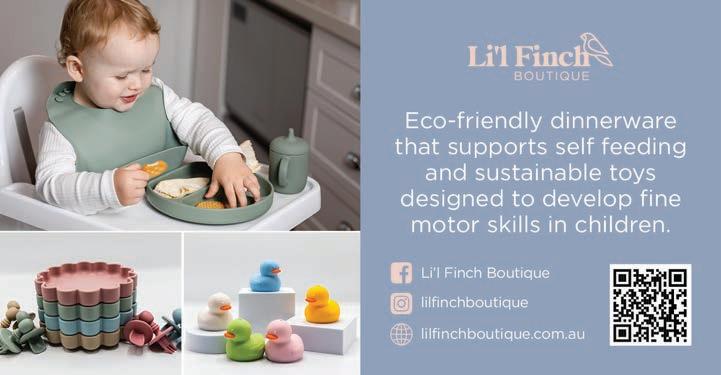

interventions are overused in high –income countries such as ours. We’re reclaiming the right to question, to pause, and to trust our bodies and instincts rather than taking anything and everything that’s offered without informed consent.
OLD SCHOOL:
Birth is something that happens to you
NEW SCHOOL:
Birth is something you can participate in
You’re not just a passenger on this journey, you. should be the driver. Whether you’re birthing in hospital or at home, this is your experience. When you’re supported, informed, and listened to, birth becomes a rite of passage to be respected, not a medical event.
So while ideas about birth may differ across generations, cultures, and personal experiences, what matters most is that each person feels informed, supported, and empowered to make the choices that are right for them.
Alice, The
helps modern women get what they want in birth & beyond, without the woo–woo! Creator of Birth Different, the birth course without the boring bits, she’s now increased her client load for 2025. Ready to birth differently? Contact Alice today.
BY MADISON PARROTT, SOCIAL WORKER
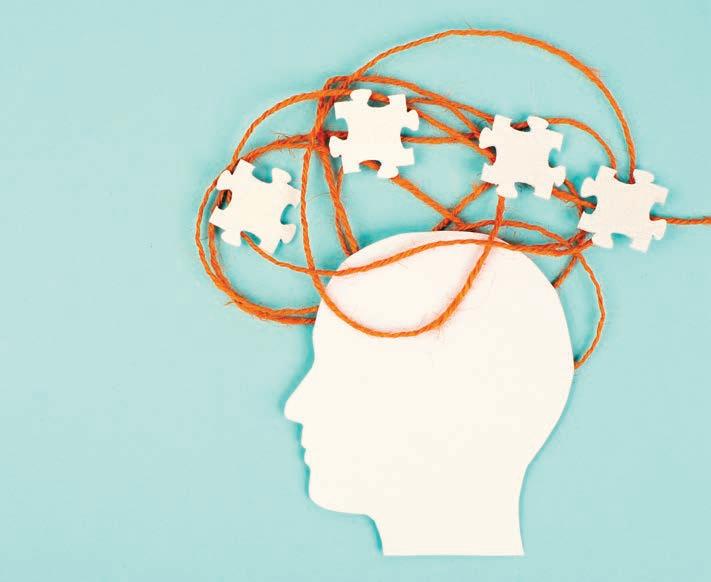
ADHD doesn’t just affect focus – it often impacts emotions, relationships, and everyday functioning. Here’s how Dialectical Behaviour Therapy (DBT) can help.
Whether you’re raising a child, guiding a teen, or navigating life as an adult with ADHD, one therapeutic approach is gaining traction across Australia: Dialectical Behaviour Therapy (DBT).
Originally developed to treat borderline personality disorder, DBT has evolved into a powerful, evidence–based framework that teaches core life skills in four areas: mindfulness, distress tolerance, emotion regulation, and interpersonal effectiveness. These are areas where people with ADHD— regardless of age – often struggle. By building skills in these four domains, DBT offers structure, insight, and tools that empower both young people and adults to better manage the challenges of ADHD.
1. Mindfulness: enhancing focus and self–awareness
Mindfulness is the foundation of DBT. It teaches individuals how to bring their attention to the present moment – something many people with ADHD find difficult. For children and teens, mindfulness builds the mental muscle needed to slow down and pay attention. For adults, it can reduce autopilot reactions, impulsivity, and stress.
Research included in the Australian ADHD Clinical Practice Guideline and the journal Mindfulness shows mindfulness practices can reduce
hyperactivity, improve attention, and support emotional regulation in people with ADHD. Across the lifespan, mindfulness helps individuals notice their thoughts and feelings without being overwhelmed by them – an essential skill for managing both the internal and external chaos ADHD can bring.
2. Distress Tolerance: managing intense emotions
Whether it’s a child having a meltdown over homework or an adult overwhelmed by workplace stress, distress tolerance skills are vital. This DBT module teaches practical tools for handling emotional storms without making the situation worse. These include grounding exercises, distraction strategies, and healthy ways to ride out a crisis.
Young people often benefit from these tools during times of transition, frustration, or peer conflict. Adults may use them when navigating work pressure, parenting stress, or interpersonal struggles. At the Central Coast DBT Centre, we see how these techniques help individuals of all ages respond more calmly and effectively when emotions run high.
3. Emotion Regulation: creating stability
Emotional dysregulation – frequent mood swings, low frustration tolerance,
and intense reactions – is increasingly recognised as a major component of ADHD. DBT’s emotion regulation module teaches people how to name their emotions, understand what triggers them, and build routines that support emotional wellbeing.
A 2022 Australian–based study published in BMC Psychiatry found that DBT group therapy significantly improved emotion regulation and executive functioning in adults with ADHD. But this is not limited to grown ups – teenagers in DBT programs often report better self–control, while parents observe fewer emotional outbursts at home.
But ADHD isn’t just a childhood condition. For many, it continues into adolescence and adulthood, bringing a unique set of challenges at each stage of life
From childhood through adulthood, developing emotion regulation skills can mean the difference between feeling out of control and being able to respond with intention.
4. Interpersonal effectiveness: improving relationships
ADHD can make relationships challenging. Kids may struggle with turn–taking or reading social cues. Teens and adults might find it difficult to express their needs clearly or maintain healthy boundaries. DBT’s interpersonal effectiveness skills are designed to address exactly these issues.
These skills help people ask for what they need, say no respectfully, and handle conflict – whether it’s a playground disagreement, family argument, or workplace tension. Adolescents often use these skills to manage peer relationships or navigate romantic situations. Adults benefit from them in parenting, partnerships, and professional settings.
For many individuals with ADHD, learning how to communicate effectively is a turning point. Relationships improve, confidence grows, and social anxiety often decreases.
A skills–based approach for all
What makes DBT especially powerful is that it’s adaptable across the lifespan. Younger children can learn DBT skills through games, stories, and caregiver coaching. Teenagers may benefit from group programs that focus on peer dynamics and emotional control. And adults can access DBT through individual therapy or structured group
skills training.
Whether you’re a parent of a child with ADHD, a teenager navigating high school, or an adult managing work, relationships, and responsibilities, DBT provides tools that can be used in everyday life.
And DBT doesn’t replace medication or academic accommodations—it complements them. It provides the emotional and behavioural scaffolding that many people with ADHD need to thrive.
If you’re a parent of a young person with ADHD, or if you have ADHD yourself, here’s how you can start exploring DBT:
Look for DBT–informed therapists or group programs in your area who specialise in ADHD.
Try mindfulness at home with your child. Apps like Smiling Mind (an Australian resource) are a great place to begin.
Practice emotional naming – help your child (or yourself) recognise and label feelings as they come up.
Use DBT strategies as a family, such as deep breathing, “STOP” skills, or “wise mind” decision–making.
ADHD presents unique challenges
ADHD can make relationships challenging. Kids may struggle with turn–taking or reading social cues. Teens and adults might find it difficult to express their needs clearly or maintain healthy boundaries
at every stage of life, from early childhood through adulthood. DBT offers a structured, research–informed approach that helps people of all ages develop emotional control, focus, resilience, and stronger relationships. Whether your child is just beginning their ADHD journey or you’re an adult seeking new ways to manage your symptoms, DBT can be a powerful tool for creating long–term change.
Ph: 02 4660 0100
Suite 2/34 Karalta Road, Erina NSW 2250
info@mindfulrecovery.com.au mindfulrecovery.com.au
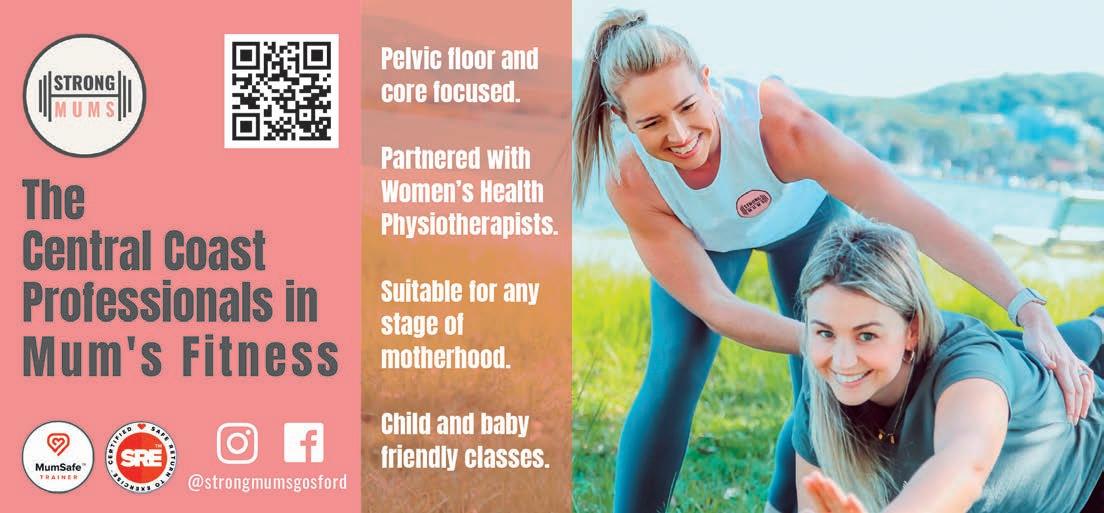
BY SELINA CHAPMAN, PSYCHOLOGIST

So, you want to make some positive changes in your mental health and wellbeing but don’t know where to start? Let me answer some commonly asked questions.
The typical first step is to see your GP and get a Mental Health Treatment Plan (MHTP). This means you get 10 Medicare rebated appointments with a psychologist or accredited mental health care professional. Simply make a long appointment when you book. The MHTP is still valid with someone else if you change your mind.
For treating eating disorders, specialised plans access up to 40 psychological appointments and 20 dietician appointments with qualified clinicians specialising in the individual’s diagnosis.
Both types of clinicians accept MHTPs, and both clinicians have the same qualifications and offer the same services. The differences will be work settings and possibly the cost of the appointment. A psychologist in a public health setting will typically see you in a hospital or clinic with their fee completely covered by Medicare having no additional costs to you.
A psychologist in private practice will see you in a non–clinical setting which looks like a lounge room. Private psychologist fees typically have a gap, so there are additional costs for your appointments.
Both clinicians may have waitlists, however private practitioners might have more availability in general than through the public health system. It is worth it to ‘shop around’ to find the right fit for you.
All practising psychologists are registered with the Psychology Board of Australia and the Allied Health Practitioner Regulation Agency (AHPRA).
The title, psychologist, is a protected title meaning only those clinicians that have completed the approved accreditation pathways, and requirements and have been accepted by AHPRA can use the title, psychologist. It is an offense to use the title when you are not qualified to use it.
A provisional psychologist is a practitioner who has completed at least an undergraduate degree in psychology, is possibly studying or has studied a postgraduate degree and is undergoing placements under the supervision of a board approved supervisor.
A general psychologist is a clinician who has met the requirements for practicing as a psychologist and has no specialisations.
A psychiatrist is a medical doctor who has completed additional education and training and specialises in psychoses, complex mental health disorders, and can prescribe medications for their patients
A clinical psychologist has completed a specialised post–graduate degree in clinical psychology.
WHAT IS THE DIFFERENCE BETWEEN A PSYCHOLOGIST AND A PSYCHIATRIST?
This is an often–asked question. A psychologist has completed a psychology undergraduate and possibly an additional postgraduate degree. A psychologist can assess, diagnose and treat mental health disorders for their clients. The current education pathway takes at least 6 years to complete.
A psychiatrist is a medical doctor who has completed additional education and training and specialises in psychoses,
complex mental health disorders, and can prescribe medications for their patients. The average pathway takes between 11 to 13 years.
Both work in private or public practice, accept MHTPs, diagnose and treat mental health disorders.
WHAT IF I CAN’T AFFORD A GAP FEE FOR THERAPY? WHAT CAN I DO?
There are several options available including Head to Health and Mindspot services who provide free psychological services in–person or online.
You can also discuss financial options during your GP discussions when you get your MHTP or talk with your preferred psychological clinic about payments options.
WHAT IS THE DIFFERENCE BETWEEN ONLINE AND TELEHEALTH APPOINTMENTS?
Online programs can be free or incur a fee. Typically, they involve psycho–education and strategies to learn helpful
skills. Some services don’t have a mental health professional involved so they are completely self–directed learning. Reputable online services include This Way Up, Beyond Blue, Lifeline or The Black Dog Institute.
Telehealth involves one–on–one appointments with your clinician via a secure online platform or phone. Some clinicians may be able to see you in–person and/or via telehealth regularly.
I AM UNDER THE AGE OF 16. HOW CAN I ACCESS THERAPY?
Option one is to see your GP and get a MHTP with your parent or guardian. Option two is to contact services for children such as Kids Helpline, or Headspace.
HOW DO I FIND A THERAPIST AND KNOW THEY ARE QUALIFIED?
You can find a qualified therapist in any Allied Health profession under the regulation of AHPRA via https://www. ahpra.gov.au/
If you are not sure who you want, you can find a therapist for you based on location, speciality or both via their professional websites.
WHAT ARE THE DIFFERENT TYPES OF THERAPY?
In a nutshell, there are several types of therapy e.g. individual, group, couples, or family. Therapists come in as many varieties as clients from play, art, relationships, trauma, or neurodivergent.
Qualifications and experiences varies as well from unregulated term “psychotherapist” or “counsellor” to very regulated “accredited mental health social worker” and “psychologist”.
I READ SELF–HELP BOOKS, SHOULD I STILL SEE A PROFESSIONAL?
Absolutely! Think of it like a gym for emotional and mental health to stay on course and keep up to date with current evidence–based practice.
Take care, Selina
Selina Chapman is a psychologist at The Heart and Mind Collective in Wyoming. She works with individuals of all ages seeking empowerment and support. Selina says, “Seeking support for mental health is about maintaining emotional and mental wellbeing as well as having extra help as and when we need it”.

BY LOUISE HURLEY, MumSafe TM TRAINER OF THE YEAR 2022
Let’s set the record straight: women can – and absolutely should – lift heavy weights. It’s not a trend or a passing phase. It’s backed by science, and it’s one of the best things we can do to future–proof our bodies. Strong muscles and solid bones are essential for long–term health and independence as we age.
For years, there’s been hesitation around women building muscle. And honestly, I think a lot of it stems from the unrealistic and outdated beauty standards we’ve grown up with. We’re told that small and slender is beautiful, while strong and solid is somehow “too much.” Not too long ago, it was rare to see women in the weights room. Fast forward to today and thankfully there’s been a huge shift in how women approach movement. Strength training is finally being seen for what it is— powerful, empowering, and essential.
So why all the hype around lifting heavy? Let’s sort the facts from the fiction and bust a few common myths along the way.
MYTH #1:
Lifting heavy will make you bulky
The idea that lifting weights will turn you into the female version of The Rock is simply not true.
Reality check: Building significant muscle mass requires a very specific set of conditions: high testosterone levels (which women naturally don’t have), a strict high–calorie, high–protein diet, and a training schedule that looks like a full–time job. For most of us, getting “bulky” is really hard – especially if we’re just lifting a few times a week. What you will get from lifting heavy is improved strength, body composition, and confidence.
MYTH #2:
Lifting heavy is dangerous. “Careful, you’ll hurt yourself!” Sound familiar? It’s a common concern, especially for women who haven’t lifted before.
Reality check: Like anything, lifting
weights has risks if you’re doing it with poor technique or pushing beyond your limits too soon. But when done properly, strength training actually reduces injury risk—especially for things like back pain and bone fractures. This is particularly important post–menopause, when bone density naturally starts to decline. Start with guidance from a qualified coach, use progressive overload, and lifting becomes one of the safest (and smartest) things you can do.
MYTH #3:
Strength training is bad for ageing joints. Nope, the opposite is true.
Reality check: Lifting weights increases bone density, strengthens muscles, and improves the quality of your connective tissues. Over time, that means less stiffness, better mobility, fewer falls, and a much lower risk of fractures. If you’re lucky enough to grow older, strength training will help you stay active and independent for longer. What’s not to love about that?
MYTH #4:
I’ve had kids, so lifting heavy is off the table . This is a big one, and it’s understandable that many women are cautious post–birth.
Reality check: After having a baby, most women need some form of pelvic floor rehab – especially if they’re dealing with issues like pelvic organ prolapse. But that doesn’t mean you’re ruled out from lifting heavy weights forever. With the right support from a women’s health physio and a MumSafe™ trainer, you can safely return to lifting. It just takes time, a
plan, and the right team in your corner.
MYTH #5:
Lifting weights makes you gain weight. Here’s where scale obsession can get in the way of real progress.
Reality check: Yes, muscle and bone weigh more than fat – so the number on the scale might creep up. But that number tells you nothing about your strength, resilience, or overall health. In fact, the more muscle you have, the higher your metabolism runs – which means you’ll burn more energy, even at rest. Stronger bones, better posture, increased energy and a boost in fat–burning? Sounds like a win to me.
So how do you start lifting heavy?
The definition of “heavy” will vary from person to person – it all depends on your current level of strength. As a general rule, a heavy weight is about 70 percent of your one – rep max (that’s the most you can lift once). But you don’t need to get too technical when you’re starting out.
Begin with a weight that feels challenging by rep 8, and increase gradually as you gain confidence. Form always comes first. If you’re unsure where to begin, don’t wing it –find a qualified trainer who can help you ease in safely and progressively. That way, you’re building strength and avoiding injury.
And if you love other forms of movement – keep them in your life! Just think of strength training as the protein in your exercise diet. It supports everything else you do, and your body will thank you for it.
Louise Hurley, owner of Strong Mums and the Body Resilient Mum podcast is on a mission to help mums to return to exercise safely and realise that they are so much more than what their post–baby body looks like, at any stage of motherhood. Find out more at www.strongmums.com
BY JESSICA SANFORD

The more we read, the more we learn and the more we learn, the more understanding and tolerant we become about differences. Knowledge is key. Therefore, it makes sense to use entertaining and beautiful picture books as tools to educate our youth. These two are great examples.
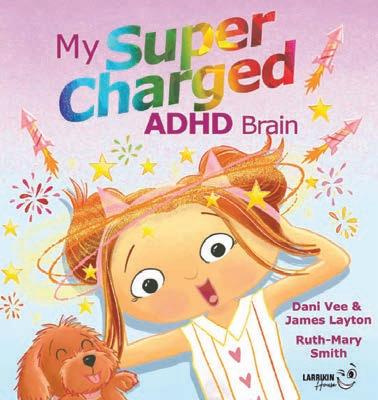
My Super Charged ADHD Brain, by Dani Vee and James Layton, illustrated by Ruth–Mary Smith is a bright and fun picture book describing how the young ADHD brain might function. The character in the book explains that all brains are different, for example, science brains and sporty brains, but her brain is more like a race car or a rocket ship with her thoughts firing fast and simultaneously. The book gently explores the challenges of ADHD, for example, losing school shoes and library books and being
either too talkative or sleepy in class. It highlights the positives of the ADHD and focuses on creativity, idea generation, friendship, and fun. The font is large and engaging to keep distracted readers entertained. The creators of My Super Charged ADHD Brain all have personal experiences with ADHD and the message is good – uniqueness is to be celebrated, differences tolerated and all of us, no matter what type of brain we have, have valuable contributions to give.
Don’t Fall for the Trick: A Guide to Smashing Gender Stereotypes, written by Jennifer Bain and Illustrated by Scott Stuart is a clever picture book debunking the age–old portrayals of girls and boys as “tricks” to be seen through, challenged and discussed. The tired notions of, “pink is a girl’s colour”, or “boys can’t play with dolls” are simply societies constructs, ingrained over time; restrictive and unnecessary. People can obviously wear whichever colour they choose; they can play whichever sport they choose. Everybody can be strong. One storyline
sees children staying with their grandparents and over the course of the weekend they convince Pa that he can, in fact, cook if he wants to and, lo and behold, Gran does have the ability to fix things when she just puts her mind to it. An important lesson here is that if people are told they can’t do something they will start believing that, but when they are told they can achieve, they are smart, they are strong, they can wear whatever they want, they believe that too, and that’s when individuals and, therefore, communities will thrive.
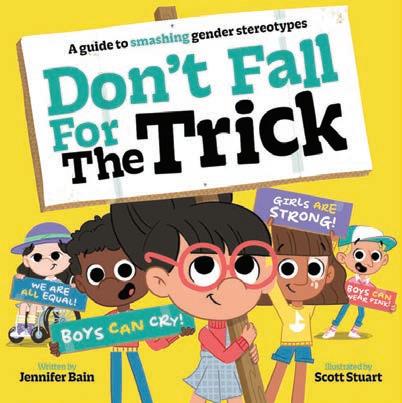
Jessica Sanford is a writer living on the Central Coast. She has a passion for literature and writes fiction and non–fiction. Jessica was the winner of the Wyong Writers’ 2021 Short Story Competition and has also been longlisted for the Furious Fiction prize. She’s currently working on a novel set in rural NSW. https://jessicasanford.com
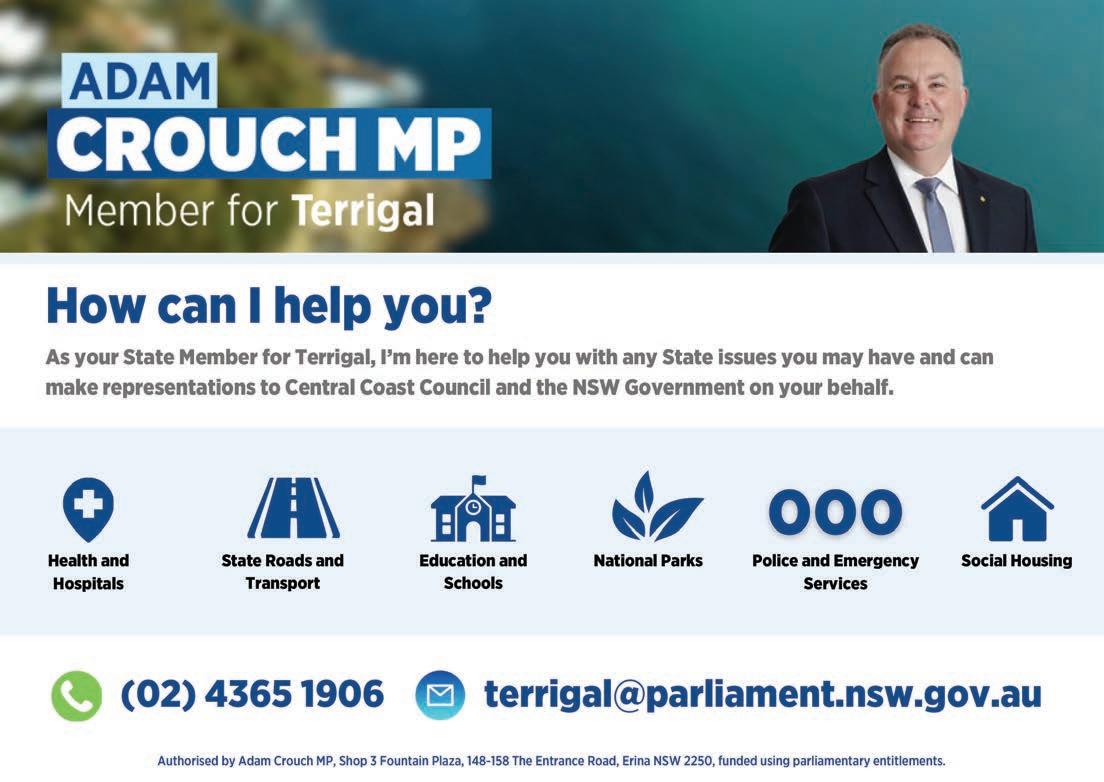

BY CLARE MARCANGELO – NUTRITION SLEEP AND REGULATION EXPERT

Supporting your child through things like anxiety, sensory overwhelm, ADHD, or emotional meltdowns is a full–hearted, full–time mission. And while there’s no one–size–fits–all solution, there are small, food–based changes that can genuinely support emotional regulation.
As a children’s nutritionist specialising in anxiety and neurodivergent care, here are three gentle nutrition shifts that I’ve seen work wonders for families across the world.
But I also say this as a mum of 3 who has had her fair share of a managing anxiety and big feelings throughout the years!
Protein within 30 minutes of waking
This one simple change can regulate blood sugar, stabilise morning mood swings, and reduce cortisol spikes.
Swap: sugary cereals
For: scrambled eggs, Greek yogurt with seeds, or a protein smoothie with oats
Ditch additives that disrupt the nervous system
Certain colourings, preservatives,
and artificial sweeteners can worsen hyperactivity, sleep issues, or anxious behaviours – especially in sensitive kids.
You would not believe the difference in many kids once we successfully remove these even just for a short time. It is not a “cure” for any of the above issues of course but taking out the factors that can further impact our body’s ability to regulate naturally is huge.
Start by reducing:
E–numbers like E102 (Tartrazine)
MSG (flavour enhancer 621)
Artificial sweeteners like Aspartame Tip: Choose additive–free crackers, natural yogurts, and simple whole foods. Flavour things yourself at home.
Add magnesium–rich foods to the daily routine
Magnesium could be known as one of nature’s many chill pills – and kids with stress, anxiety or gut issues often burn through it faster due to stress or sensory overload.
Try adding:
Roasted pumpkin seeds
Smoothies with cacao & banana
Cooked leafy greens blended into pasta sauce or soup
Final thought
No child’s nervous system can regulate
if they’re running on sugar crashes, synthetic additives, or missing calming nutrients. These tweaks aren’t restrictive or extreme — they’re realistic and supportive.
And the biggest draw card of this approach you can do it yourself. I know exactly what it feels like to be up at night scrolling and researching trying desperately to find a way to ease things for my child as soon as humanly possible and being able to take control of your child’s food can do just this.
BY DR GEORGIA PAGE, GP AT YOUR FAMILY DOCTORS, ERINA
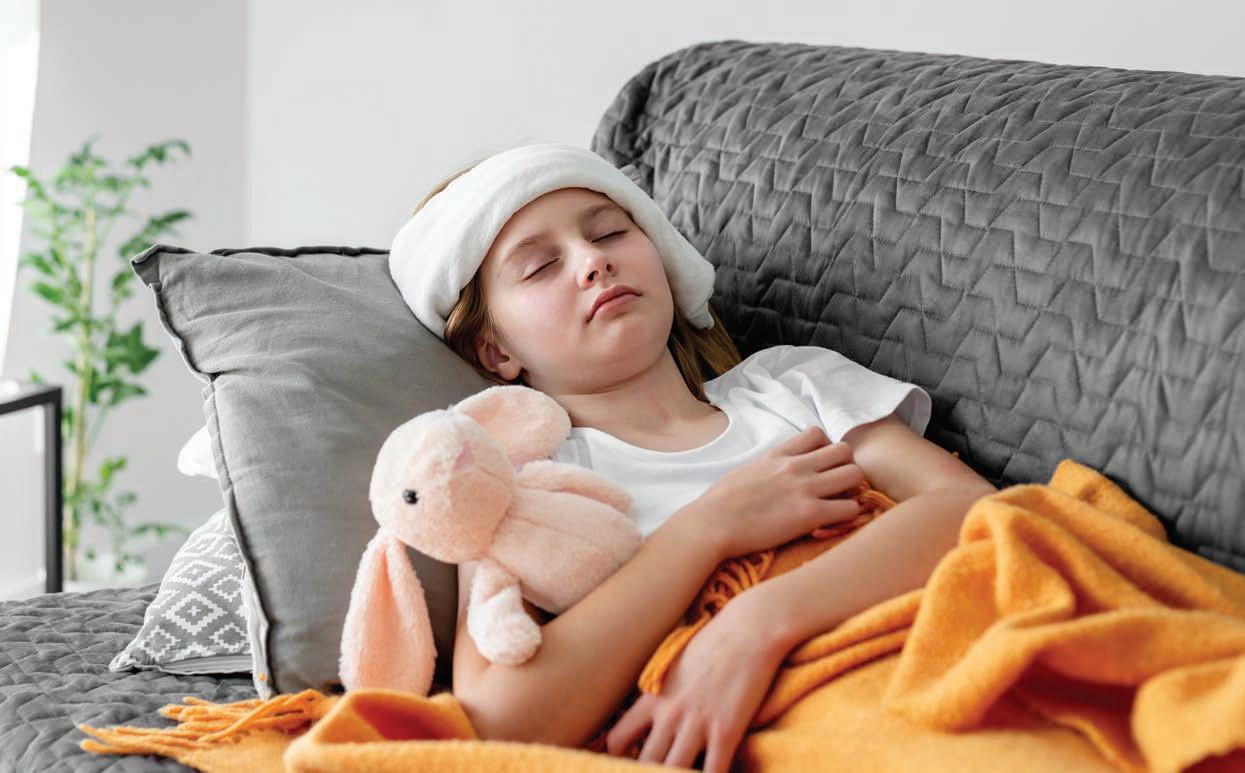
Respiratory syncytial virus (RSV) is a common respiratory infection that primarily affects young children, but it can impact adults too. While many cases of RSV are mild, it can cause serious health problems, particularly in babies, the elderly, and those with weakened immune systems. Understanding RSV and the measures available to prevent and manage it is essential for parents and caregivers.
What is RSV?
RSV is a highly contagious virus that spreads through droplets when an infected person coughs or sneezes. It typically affects the lungs and airways and is known to cause symptoms similar to the common cold, such as a runny nose, cough, and mild fever. However, it can also lead to more serious illnesses like bronchiolitis (inflammation of the small airways in the lungs) or pneumonia, especially in vulnerable groups such as babies under one year of age.
In fact, RSV is responsible for a significant number of hospitalisations and even deaths among young children. It is estimated that one in 50 deaths in children under five is linked to RSV. While adults can get RSV too, it’s older adults, especially those over the age of 65, who are more likely to experience severe symptoms. Around 300,000 people in this age group are hospitalised annually due to RSV complications.
Symptoms of RSV
RSV can manifest in different ways, depending on the severity of the infection. Common symptoms include:
Runny nose
Coughing
Wheezing
Difficulty breathing
Fever
Cyanosis (a bluish or greyish colour of the skin, especially around the lips or fingertips).
For most children, RSV causes mild cold–like symptoms, but in severe cases, it can lead to more significant respiratory issues. Babies under one year of age are particularly susceptible to complications such as bronchiolitis or pneumonia, which can lead to hospitalisation and intensive medical care.
RSV spreads quickly, especially during the cooler months of autumn and winter, when cases in New South
RSV is responsible for a significant number of hospitalisations and even deaths among young children
Wales (NSW) are most common. The virus can remain contagious for up to 10 days, which makes it essential for parents to take precautions to protect their children, particularly those under one year of age.
Here are some tips to prevent the spread of RSV:
Stay home when sick and avoid contact with others, especially young children.
Cover your mouth when coughing or sneezing – use your elbow or a tissue, not your hands.
Wash your hands frequently with soap and water, or use hand sanitiser
when out and about.
Wear a mask where possible to prevent transmission.
Keep sick family members away from babies and young children.
Vaccinations for RSV.
Vaccination is an important tool in reducing the severity of RSV, especially for vulnerable populations like pregnant women, babies, and older adults.
RSV vaccine for pregnant women
Expecting mothers can now help protect their babies from RSV through a vaccine called Abrysvo ®. This vaccine is given during pregnancy, ideally between 28 and 36 weeks of gestation. By receiving the vaccine, pregnant women create antibodies that help protect their babies from RSV in their first months of life—when they are most vulnerable.
Studies have shown that babies born to mothers who received Abrysvo ® are 70 percent less likely to require hospitalization due to RSV in their first six months. This vaccine became available for free under the National Immunisation Program (NIP) in February 2025. If you’re pregnant, speak with your GP or maternity care provider about receiving this vaccine to help ensure the health and safety of your baby.
RSV Immunisation for babies
For babies at high risk of severe RSV illness, there is an important new immunisation called Beyfortus (nirsevimab), a monoclonal antibody treatment. This vaccine provides immediate protection against RSV by delivering ready–made antibodies directly to the baby, offering protection for at least five months after a single dose. Beyfortus has been shown to be around 80 percent effective in preventing hospitalizations due to RSV.
Under the NSW RSV Prevention Program, Beyfortus will be given to
babies born on or after March 17, 2025, who have mothers who either didn’t receive the Abrysvo ® vaccine or received it less than two weeks before delivery. It will also be given to babies born with medical conditions that put them at higher risk of severe illness from RSV. Beyfortus is available for free for eligible babies, and it’s important to discuss with your doctor whether your child should receive it.
The RSV vaccine Arexvy is also available for adults aged 60 years and older, particularly those who are at higher risk of severe RSV illness due to pre–existing health conditions like heart disease, diabetes, or compromised immunity. The vaccine is recommended for individuals over the age of 75 and for Aboriginal or Torres Strait Islander people aged 60 and over. This vaccine is presently not government funded and costs approximately $315. Speak to your doctor or pharmacist to learn more about Arexvy and whether it’s right for you.
Unfortunately, there is no specific antiviral treatment for RSV. In most cases, RSV can be managed at home with supportive care, including:
Ensuring the child gets plenty of rest
Offering fluids, such as breast milk or formula for babies.
Using paracetamol or ibuprofen to reduce fever or discomfort.
Antibiotics are ineffective against RSV since it is caused by a virus.
Recovery can take up to 8 to 15 days.
If symptoms become severe, such as difficulty breathing, dehydration, or bluish skin around the lips or fingertips, immediate medical attention should be sought by calling emergency services or visiting the hospital.
The bottom line
RSV can be a serious illness for babies, older adults, and those with weakened immune systems, but preventive
Dr Georgia Page enjoys all aspects of general practice and has been working at Your Family Doctors at Erina for the past 12 years. The practice has a fabulous team and they pride themselves on delivering good quality health care, with that special personal touch. For more information call 4365 4999, check the website www.yourfamilydoctors.com.au or like them on Facebook.
Resources –
https://www.health.nsw.gov.au/Infectious/factsheets/Pages/respiratory-syncytial-virus.aspx
measures, including good hygiene practices, vaccinations for pregnant women, eligible babies and older adults, can make a significant difference.
By receiving the vaccine, pregnant women create antibodies that help protect their babies from RSV in their first months of life— when they are most vulnerable.
As we move through RSV season, it’s essential to stay informed and take steps to protect yourself and your loved ones. If you’re unsure about what vaccinations or immunizations might be right for you or your baby, speak to your healthcare provider for advice.

I really feel for you. When our two sons played soccer and AFL for a brief while too, we used to pray it would rain so that soccer would be cancelled and we could sleep–in, warm and snug. Some fields would be an hour away. It was an all–round groan as it rolled around each week. Sometimes I would even notice the boys didn’t want to go either.
And then this amazing thing would happen. You’d go. It would feel like ‘a community thing’. Most of the time the kids would have fun. There’d be a bacon and egg roll morning barbecue, cute little dogs would be vying for attention, and the sun would pop through sometimes too. You’d chat to the other parents and get the news and know your kids’ friends a bit better.
At the end of it all, you felt you did a good thing. The family had an outing and you had a real reason to run away from the housework.
Sure, hubby and I did a bit of tag
BY SARAH TOLMIE
READER QUESTION:
“My kids play soccer throughout winter. I really do not enjoy going. It is early, cold, often wet and I get very triggered by the loud shouty, almost bully parents on the sidelines. How do I endure? Is it ok not to go?
teaming and lift sharing with other parents just to stretch out our endurance over the entire season. But here’s the strangest thing. When it all ended for us, when our boys stopped playing for a while, and later, when they resumed as young adults with cars and driving themselves, we missed it! I’d have to haggle with them to invite me to come and watch.
Only this Mother’s Day, I wandered down to watch my son now 19 years, play in an adult team with all his young mates. They had champagne and croissants for the ‘mums’ and a team photo with the mums at the end of the game. I can’t tell you how proud I felt. Put in the hard yards, and life and love will deliver these sweet moments that make it all worthwhile.
Community sport is a great thing. Whether it is nippers, soccer, netball, football, swimming, cricket, water polo etc, if your kids want to do it, support them. If they are unsure, encourage

Sarah Tolmie – Life & Love: Sarah is a marriage therapist, life & love and relationship coach, end–of–life consultant, an independent and bespoke funeral director and holistic celebrant. She provides holistic care, mentoring, guidance, healing and transformation for individuals, couples and families at their most important times of life & love – at end–of–life, in love & relationship, and in ritual and celebration. Sarah has a relationship online course for couples called “Creating a Miracle Marriage” and a guide to working with feelings and emotions called “How Do You Feel?”; plus a free resource and video series for families facing dying, death and grief called “Landscapes of Life & Love and Loss”. To find out more, visit – www.sarahtolmie.com.au
them to try. If they really don’t want to play, be a volunteer or supporter, because there is something about the community building, egalitarian, family friendly atmosphere that encodes inclusivity, respect and engagement in a child’s ethos.
And as for those triggering parents on the sidelines. My approach was to stand with and amongst them. Have a friendly chat and find out about their community. Comment positively on both teams. Enthusiastically cheer great play from any player and applaud the goals of each team. Model that for the team and other parents and this can help to create a more friendly, fun and enjoyable atmosphere
Much love, Sarah x

Exercise is a powerful tool for every child’s growth and development, but for children with neurodiverse conditions and physical disabilities, it can be a game changer. It’s not just about staying fit. Regular physical activity can unlock new possibilities, improve their health, and help them thrive both physically and emotionally.
For children with neurodiverse conditions, like autism spectrum disorder (ASD) or ADHD, exercise offers much more than just movement. It can help them build confidence, manage stress, and improve focus.
Physical activity is a great way to teach kids how to express themselves, improve their coordination, and interact with others in a fun and safe environment. Plus, exercise is a natural way to reduce anxiety and frustrations that often accompany neurodiverse
conditions, helping kids feel more in control and relaxed.
For children with physical disabilities like cerebral palsy, exercise is just as important. It helps them build strength, increase mobility, and improve balance. The more children move, the stronger their muscles and joints become, which means they can participate in daily activities with greater ease.
Exercise is also essential for heart health and bone strength, preventing complications that can arise from a lack of movement, such as joint stiffness or muscle weakness.
But the benefits go beyond the physical. For kids with neurodiverse conditions and disabilities, regular exercise can have a positive impact on mood and behaviour. Physical activity releases endorphins – the body’s natural
feel–good chemicals – which can improve their mood, help them manage stress, and even improve their sleep. In other words, exercise can help children feel happier, more balanced, and better equipped to face the world.
At Conveniently Active, we offer tailored exercise programs that cater specifically to the needs of children with neurodiverse conditions and physical disabilities. Our programs are fun, engaging, and designed to help children grow, develop, and build skills in a supportive and nurturing environment.
Exercise is not just about fitness – it’s a way to help children reach their full potential, feel better, and live healthier, happier lives. By making movement a regular part of their routine, we can help them unlock new abilities and experiences, boosting their physical, emotional, and social wellbeing.
